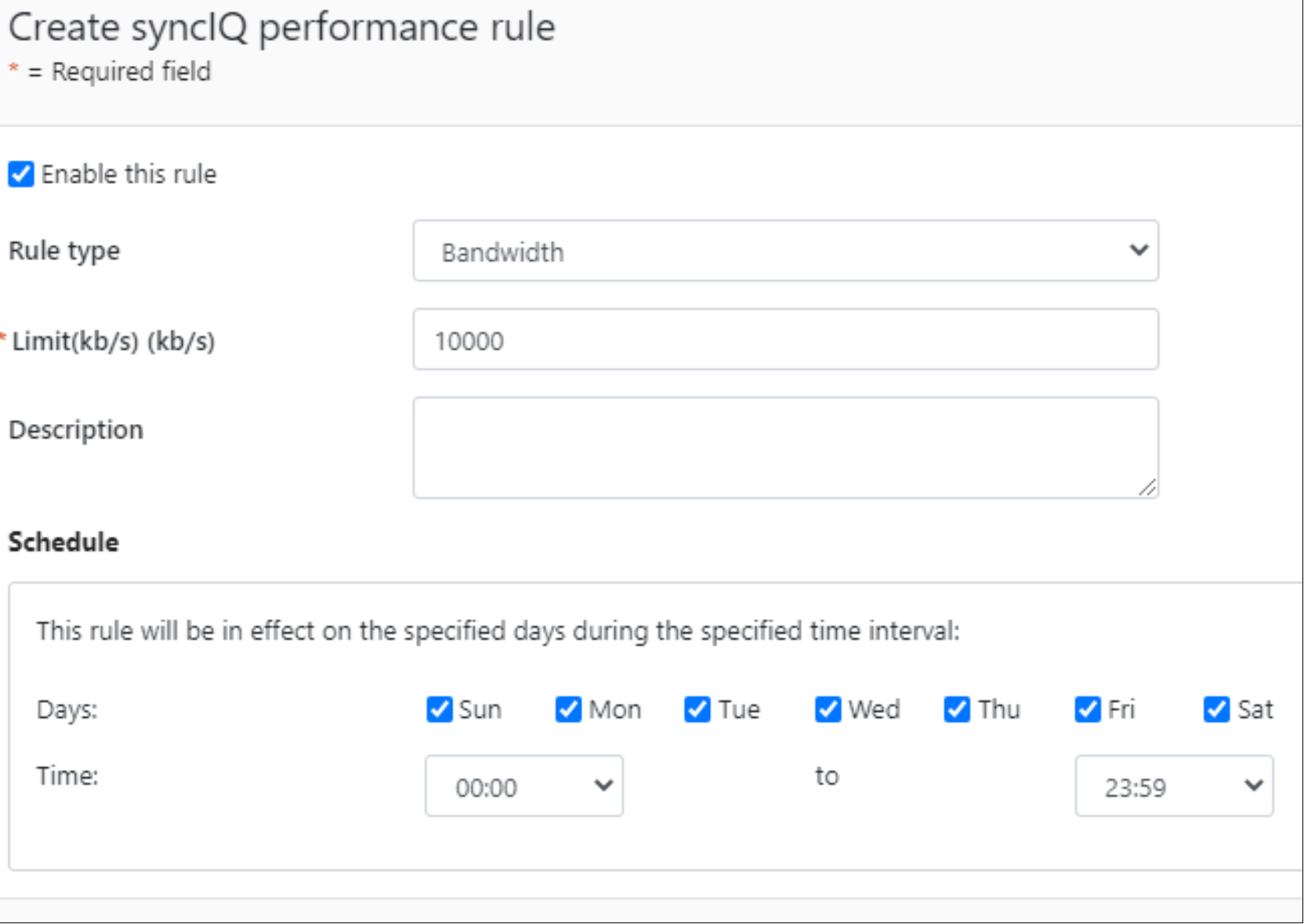Home > Storage > PowerScale (Isilon) > Product Documentation > Data Protection > Dell PowerScale SyncIQ: Architecture, Configuration, and Considerations > SyncIQ performance rules
SyncIQ performance rules
-
Performance Rules provide several options for administrators to define limits of resource consumption for SyncIQ policies during specific times or continuously. Setting performance limits allows for minimal impact to high priority workflows but allows nodes to participate in replication within a defined set of resources.
SyncIQ uses aggregate resources across the cluster to maximize replication performance, thus potentially affecting other cluster operations and client response. The default performance configurations, number of workers, network use, and CPU consumption may not be optimal for certain datasets or the processing needs of the business. CPU and network use are set to unlimited by default. However, SyncIQ allows administrators to control how resources are consumed and balance replication performance with other file system operations by implementing a number of cluster-wide controls. Rules are created to define available resources for SyncIQ policies for different time periods.
To view or create SyncIQ Performance Rules from the OneFS web interface, click Data Protection > SyncIQ and select the Performance Rules tab. Existing Performance Rules are displayed. Click Create a SyncIQ Performance Rule, to add a rule, as displayed in the following figure.

Figure 25. Creating a SyncIQ performance rule
From the Rule Type drop-down menu, select one of the following options:
- Bandwidth: This option provides a limit on the maximum amount of network bandwidth a SyncIQ policy can consume. When Bandwidth is selected the Limit field changes to kb/s. In the Limit field, specify the maximum allowable bandwidth in kb/s.
- File Count: This option allows administrators to define a maximum number of files that replication jobs can send per second. When File Count is selected, the Limit field changes to files/sec. In the Limit field, specify the maximum allowable files/sec.
- CPU: This option limits the CPU consumption to a percentage of the total available. When CPU is selected, the Limit field changes to %. In the Limit field, specify the maximum allowable percentage for the maximum CPU consumption.
- Workers: This option limits the number of workers available to a percentage of the maximum possible. When Workers is selected, the Limit field changes to %. In the Limit field, specify the maximum percentage of workers.
These performance rules will apply to all policies running during the specified time interval.
Node participation in a SyncIQ policy may be limited as described in Restricting SyncIQ source nodes and Target cluster SmartConnect zones.
Note: While SyncIQ allows multiple Performance Rules to be created, not all rules are applicable to every workflow. Consider the impact on RPO times. Depending on the RPO requirements, a Performance Rule could severely affect replication times. In the initial implementation of rules, starting with high maximum limits and gradually reducing them as RPO times are monitored is recommended.
For more information about SyncIQ performance tuning, see Optimizing SyncIQ performance.
